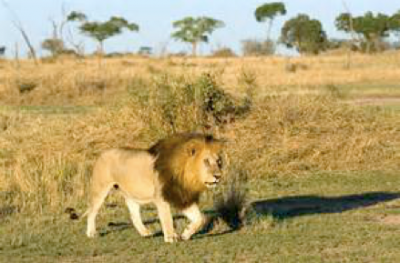|

Not a migratory species
The authors are Hans Bauer (Born Free and Oxford University Wildlife Conservation Research Unit), Kirstin Nowell (IUCN), Urs Breitenmoser (IUCN Cat Specialist Group co-chairman), Mark Jones (Born Free) and Claudio Sillero-Zubiri (WildCRU and Born Free).
I can imagine the frustration of Hans and his team putting together this document and attempting to cast a positive spin on “lion conservation”. Detailed as follows:
-
The CMS approached 44 African nations to answer a few questions to discover their present lion conservation measures. Only 10 replied – not surprising really, as the majority of those 44 nations do not have any existing lion populations. Were any follow-up phone calls made to the wildlife departments of the other current lion range states to urge them to participate?
-
Of the ten nations that replied (Benin, Cote d’Ivoire, Guinea-Bissau, Somalia, Mali, Uganda, Kenya, Tanzania, Zimbabwe and South Africa) at least three do not have any lions remaining or are at least highly dubiously reporting lion populations. These are Cote d’Ivoire, Mali and Somalia.
-
The report seeks to connect the 2006 IUCN initiative to conduct conferences among western and central lion African range states and eastern and southern African lion range states with progress towards lion conservation. The report states that there was “no formal adoption or ratification process” for these IUCN conferences. In other words – missed opportunities via a lack of follow-up.
-
The document reiterates claims that lion populations “increased” by 12% in four southern African countries (Botswana, Namibia, South Africa and Zimbabwe) according to the IUCN. The authors then admit that such “increases” are not based on any verifiable population counts. In fact, none of the four listed countries where lion numbers have “increased” conducted proper wild lion surveys for at least a decade, so where does this concept of “increase” come from?
-
The report claims that lions in western, central and eastern Africa declined by 60% in the last 21 years. The causes were posed as human/wildlife conflict, habitat loss and prey base depletion. Note that trophy hunting is not mentioned.
-
The report extensively cites a paper by Riggio et al (2013) on current African lion population estimates. And yet correctly opines that the total lion population in Africa is closer to 20,000 rather than the Riggio estimate of over 30,000. The Riggio et al (2013) lion estimate was based on “extrapolation” of lions into “available” savanna habitats via satellite imagery.
-
The report mentioned that Google searches had to be relied on to discover whether African lion range states had National Action Plans in place. As mentioned above, a few phone calls could have been more effective?
-
The report then admits that lions are not “strictly a migratory species”, indicating that the whole Convention of Migratory Species report is not relevant?
-
The report mentions again loss of habitat to lions as caused by human population growth and increasing poverty in many (all?) lion range states. However, the report does not mention that losses of lion habitat are to a major extent these days caused by lion range states not protecting wildlife areas with any level of adequacy. In Kenya, KWS Chairman Richard Leakey recently admitted that as many as 800,000 cattle invaded the Tsavo National Parks, aided and abetted by corrupt wardens and rangers. Unless the nationally protected areas are given a high level of protection by national wildlife departments, there is no hope for lions. In Kenya alone, cattle invasions additionally occur in “protected” areas like Amboseli, Samburu/Buffalo Springs, Meru and the Masai Mara – at least.
-
The report also mentions the threat of an increased level of profit to be made from the lion bone trade to Asia. This trade was aided and abetted by captive lion breeders in South Africa, but good evidence indicates it is spreading to many other African lion range states – establishing a profitable business for lion poaching.
-
The report concludes that the IUCN lion conservation recommendations in 2006 were “technically strong”, but that the “processes that should have led to their implementation have been very weak”. And that the Convention on Migratory Species might not be the best way forward to enhance range state lion conservation measures.
At the end of the day, in my opinion, we need fewer conferences but better implementation of resolutions from past conferences. Non-binding resolutions and resolutions arrived at via conference delegates who make no difference to their government legislation only leads to breeding of further expensive conferences, workshops and “summits” – and further delays to address the increasing urgent conservation status of lions as just one example?
And guess what? Funding to effect and ensure implementation of conference resolutions is less available than funding for yet another conference. Past conference resolutions fill many filing cabinets. Best to scrape off those spider webs to remind the delegates and governments rather than just repeating the process?
Picture credit – wetu.com
|




